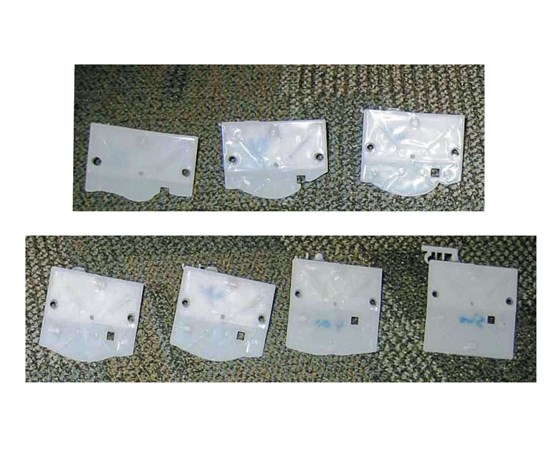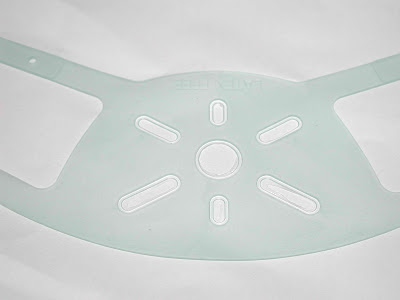Lighting fixture mold
• 1 cavity PMMA lighting Fixture mold
• Material : PMMA
• Color: High transparent
Intertech has good experience in making high transparent PC-PMMA-Acrylic lighting fixture Mold and job for many famous brands, such as Philips, Thorn, Industial…etc.
For making such project,the lighting fixture mold design is quite important…optimized mould tooling cooling, ideal lighting fixture mold injection, perfect polishing, good cycle time..etc.
Intertech has really good mold making experience and molding experience for such lighting fixture mold project, including round shape, square shape, rectangular shape light fixture parts project…etc.
Welcome to send us similar project to get our good experience and service for this lighting fixture mold making and molding fabrication.
Intertech Machinery is good at manufacturing plastic mold components used in industrial and packaging applications. Per customer’s demand, we will discuss the raw material required, the color master batch requires, mold making size required, molding machine size required, cycle time estimation, production time calculation report…etc with customers. After that, parts design service, mold engineering service, mass production arrangement, post assembly service or post machining service are also provided.
Each mold and molding projects case, we will see client specifications to serve the needs of a wide variety of industries. Our injection mold technology have D&B D-U-N-S compliant working system and meets high industry standards. We can mold any plastic, metal and rubber projects for customers. We have advanced machinery equipment to provide small to larger mold projects and also manufacture thermoplastic, engineering plastics, silicone rubber and metal parts.
Highlight Points:
- Our professional service includes engineering, mold making, prototyping and tooling
- From single prototype to OEM and ODM high professional volume production, We can manage all our clients plastic injection molding requirements.
- Except making mold, we also provide injection molding service, compression molding service (especial for silicone rubber material compounding with various colors matching and production job for specific product need) or punch die production service.
- our injection mold testing machine available 50~250T in house, 300~3000T in associated party.
- per each project need, we also design and provide fixture and jig making service for stabilizing some easy deformed parts need.
- per customer’s need, we also provide chrome plated, painting, ultra-sonic welding, assembly or packing/printing service.
We provide low volume, pilot run of production job and mass production for customer.
Product Name
|
mold
|
Plastic Material
|
PP , PE , ABS , POM , PET, PBT, Nylon + GF…..etc.
PC, PMMA Acraylic for transpartent product. |
Steel of Cavity & Core
|
Up to customer’s budget and productivity required,
we suggest the following steel grade: Pre- harden steel : P20 (1.2311), P20+Ni…etc Harfen Steel : H13 (1.2344) / NAK80…etc. Stainless steel : ASSAB Stavax…etc |
Steel of Mold Base
|
Up to customer’s budget and requirement , we suggest different mold base steel to clients. Normal used material S50C, or P20
|
No. of Cavity
|
Customized
|
Hardness of Cavity & Core
|
Pre-Hardenss Steel : HRC 30~32+-1*
Heat Treatment Steel : HRC 50~52+-1* |
Core pulling or Ejection system
|
Depends on the Products.
Commonly used :Motor , oil cylinder, stripping plate, angel pin, ejector pin…etc |
Mould Accessories
|
Compatible to DME/ HASCO Standard.
|
Cooling System
|
In Core : Baffle or By pass cooling
In Cavity Plate: Chain drilling type colling |
Surface Finish
|
Up to the prodct’s requirement, Normal used : Texture, EDM maching , Polishing
|
Mold Life
|
Up to mold steel grade, under ideal operation condition,
1. Pre-harden steel, min. 20~300000 shots 2. Harden / heat treatment steel : 60~800000 shots. 3. Stainless steel : 1 million shots. |
Runner
|
1. Cold runner
2. Hot runner 3.cold runner +hot runner |
Delivery time
|
40~50 days , presenting T1 samples
|
Packing
|
Standard Wooden Case
|
Production
|
We can also provide Pilot Run production and molding production
|
For plastic mold design, …
1. The software we use includes Pro-Engineer, I-Deas, Cimetron, Auto-Cad & Solidworks.
2. Cutomer can send 2D, 3D, by .igs .stp, formats to us.
3. We can provide mold flow analysis service.
4. Mold design (with the best optimized mold water channel arrangement design and
the best cycle time performance consideration design)
In addition, CNC milled prototype, 3D printing prototype, prototype mold making service, fixture / jig making or welding horn design and making are available in Intertech with good experience !
We need 2D, 3D parts design to start our job, we can sign NDA (if needed)
In addition, CNC milled prototype, 3D printing prototype, prototype mold making service, fixture / jig making or welding horn design and making are available in Intertech with good experience !
We need 2D, 3D parts design to start our job, we can sign NDA (if needed)
For mold making:
When making mold project, per customer’s requirement for mold steel material, we choose the suitable mold steel grade for our customers. We have high quality German and Japan imports mold steel material to proceed our mold project making. Then, the gating way will be discussed, the mold surface will be discussed, the mold cooling channel design will be checked, the operation style will be discussed, the molding machine size will be determined and the mold mechanism in actual production movement will all be checked as well. Only after our mold engineers discussing with our customers for the mold engineering in detail, we will proceed with our mold making job.







